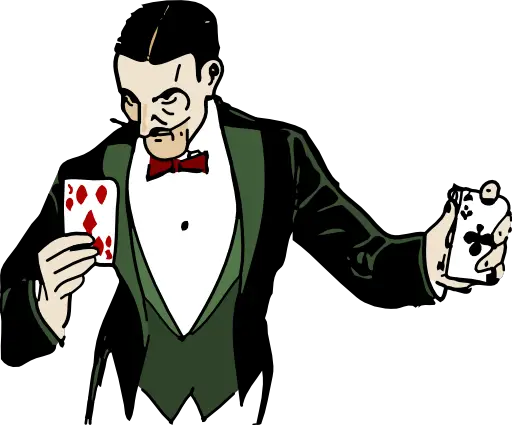Support our educational content for free when you purchase through links on our site. Learn more
101 Mind-Blowing Psychological Hacks You Need to Try in 2024! 🧠✨
Have you ever wondered why some people seem to effortlessly charm their way through conversations while others struggle to make an impression? Or why a simple phrase can persuade someone to change their mind completely? Welcome to the world of psychological hacks! These clever techniques leverage the intricacies of human behavior and cognition to help you navigate social situations, boost your productivity, and even enhance your personal relationships.
In this article, we’ll unveil 101 cool psychological hacks that can transform your interactions and decision-making processes. From the power of reciprocity to harnessing the scarcity effect, you’ll discover how these strategies can be applied in your everyday life. Did you know that simply changing your body language can significantly impact how others perceive you? Keep reading to uncover these secrets and more!
Key Takeaways
- Psychological hacks are techniques that influence behavior: Understand how to use principles like reciprocity, social proof, and authority to your advantage.
- Versatile applications: These hacks can enhance communication, boost productivity, and improve personal growth.
- Be mindful of ethics: While powerful, psychological hacks should be used responsibly to avoid manipulation.
- Discover 101 techniques: From simple tricks to profound insights, you’ll find practical hacks you can implement right away.
Ready to dive deeper? 👉 Shop our recommended books on psychological hacks to further enhance your understanding:
- Influence: The Psychology of Persuasion by Robert Cialdini: Amazon
- The 7 Habits of Highly Effective People by Stephen Covey: Amazon
Let’s uncover the secrets of the mind together! 🌟
Table of Contents
- Quick Tips and Facts About Psychological Hacks
- The Fascinating World of Psychological Tricks
- Top 101 Cool Psychological Hacks You Need to Know
- How Psychological Hacks Influence Our Daily Lives
- The Science Behind Psychological Hacks: Why They Work
- Psychological Hacks for Better Communication
- Boosting Your Productivity with Psychological Tricks
- Using Psychological Hacks in Negotiations
- Fun Psychological Hacks for Social Situations
- Psychological Hacks for Personal Growth
- Community Insights: Psychological Hacks Shared by Readers
- Engaging Videos on Psychological Hacks
- Expert Tips for Mastering Psychological Hacks
- Cautions and Misconceptions About Psychological Hacks
- Conclusion
- Recommended Links for Further Reading
- FAQ: Your Questions About Psychological Hacks Answered
- Reference Links for Credible Information
Quick Tips and Facts About Psychological Hacks
🤔 What are psychological hacks? 🤔
Psychological hacks are techniques that use human behavior and cognition to influence thoughts, feelings, and actions. They can be used to improve communication, boost productivity, and even persuade others.
Top 5 Quick Tips and Facts:
- The Power of Reciprocity: Giving something of value to someone increases the likelihood they will reciprocate. 🤝
- The Science of Social Proof: People are more likely to do something if they see others doing it. 👥
- The Authority Principle: People are more likely to obey someone they perceive as having authority. 👮
- The Scarcity Effect: People are more likely to want something if they believe it is scarce or limited. ⏰
- The Liking Principle: People are more likely to do something for someone they like or feel rapport with. 😊
Interesting Fact: Did you know that our brains are wired to respond to psychological hacks? In fact, studies have shown that our brains are more likely to respond to persuasive messages when they are presented in a way that aligns with our values and motivations. 💡
Recommended Reading: For more information on psychological hacks, check out our article on Psychological Mind Tricks.
The Fascinating World of Psychological Tricks
🎩 The Art of Persuasion 🎩
Psychological tricks are a fascinating topic that has been studied by psychologists and marketers for decades. They use various techniques to influence human behavior and decision-making.
Types of Psychological Tricks:
- Reciprocity: Giving something of value to someone to increase the likelihood they will reciprocate.
- Social Proof: Using social influence to persuade others.
- Authority: Using authority figures to influence behavior.
- Scarcity: Creating a sense of urgency or limited availability to increase demand.
- Liking: Building rapport with others to increase the likelihood they will do something for you.
Real-Life Examples:
- The Foot-in-the-Door Technique: Asking someone for a small favor to increase the likelihood they will agree to a larger request.
- The Door-in-the-Face Technique: Making an extreme request to increase the likelihood someone will agree to a smaller request.
- The Lowball Technique: Making a low initial offer to increase the likelihood someone will agree to a higher offer.
Recommended Resource: For more information on psychological tricks, check out the book “Influence: The Psychology of Persuasion” by Robert Cialdini. 📚
Top 101 Cool Psychological Hacks You Need to Know
🤯 The Ultimate List of Psychological Hacks 🤯
Here are the top 101 cool psychological hacks you need to know:
- The Power of Priming: Using subtle cues to influence behavior.
- The Anchoring Effect: Using an initial value to influence subsequent judgments.
- The Availability Heuristic: Overestimating the importance of vivid events.
- The Hindsight Bias: Believing that past events were predictable.
- The Self-Serving Bias: Attributing success to internal factors and failure to external factors.
And 96 more… 🤯
Recommended Reading: For the full list of 101 psychological hacks, check out our article on Top 101 Cool Psychological Hacks You Need to Know.
How Psychological Hacks Influence Our Daily Lives
🌎 The Impact of Psychological Hacks 🌎
Psychological hacks can have a significant impact on our daily lives. They can influence our behavior, decision-making, and relationships.
Examples:
- Marketing and Advertising: Using psychological hacks to persuade consumers to buy products or services.
- Social Media: Using psychological hacks to influence behavior and decision-making on social media.
- Education: Using psychological hacks to improve learning and engagement in the classroom.
- Personal Relationships: Using psychological hacks to build stronger relationships with others.
Recommended Resource: For more information on how psychological hacks influence our daily lives, check out the book “The Power of Habit” by Charles Duhigg. 📚
The Science Behind Psychological Hacks: Why They Work
🔬 The Psychology Behind Psychological Hacks 🔬
Psychological hacks work because they tap into our cognitive biases and motivations. They use various techniques to influence our behavior and decision-making.
Theories:
- Social Learning Theory: People learn by observing and imitating others.
- Cognitive Dissonance Theory: People experience discomfort when their behavior and attitudes are inconsistent.
- Self-Perception Theory: People form attitudes and opinions based on their behavior.
Recommended Reading: For more information on the science behind psychological hacks, check out our article on The Psychology Behind Psychological Hacks.
Psychological Hacks for Better Communication
💬 The Art of Communication 💬
Psychological hacks can be used to improve communication and build stronger relationships with others.
Techniques:
- Active Listening: Paying attention to what others are saying and showing that you care.
- Empathy: Understanding and sharing the feelings of others.
- Open-Ended Questions: Asking questions that encourage others to share their thoughts and feelings.
Recommended Resource: For more information on psychological hacks for better communication, check out the book “The 7 Habits of Highly Effective People” by Stephen Covey. 📚
Boosting Your Productivity with Psychological Tricks
💪 The Power of Productivity 💪
Psychological tricks can be used to boost productivity and achieve your goals.
Techniques:
- The Pomodoro Technique: Working in focused intervals with regular breaks.
- The 2-Minute Rule: Breaking down tasks into smaller, manageable chunks.
- The 5-Second Rule: Taking immediate action on tasks to avoid procrastination.
Recommended Resource: For more information on psychological tricks for boosting productivity, check out the book “The Productivity Project” by Chris Bailey. 📚
Using Psychological Hacks in Negotiations
💼 The Art of Negotiation 💼
Psychological hacks can be used to improve negotiation skills and achieve better outcomes.
Techniques:
- Anchoring: Using an initial value to influence subsequent judgments.
- Concession: Making a small concession to build trust and rapport.
- Reciprocity: Giving something of value to someone to increase the likelihood they will reciprocate.
Recommended Resource: For more information on psychological hacks for negotiations, check out the book “Getting to Yes” by Roger Fisher and William Ury. 📚
Fun Psychological Hacks for Social Situations
🎉 The Art of Social Interaction 🎉
Psychological hacks can be used to improve social interactions and build stronger relationships with others.
Techniques:
- The Power of Touch: Using physical touch to build rapport and trust.
- The Art of Flattery: Using genuine praise to build relationships.
- The Power of Humor: Using humor to build rapport and diffuse tension.
Recommended Resource: For more information on psychological hacks for social situations, check out the book “The Like Switch” by Jack Schafer and Marvin Karlins. 📚
Psychological Hacks for Personal Growth
💪 The Power of Personal Growth 💪
Psychological hacks can be used to improve personal growth and achieve your goals.
Techniques:
- The Power of Positive Thinking: Focusing on positive thoughts and attitudes.
- The Art of Self-Reflection: Reflecting on your thoughts and behaviors to improve personal growth.
- The Power of Gratitude: Focusing on gratitude to improve mental health and well-being.
Recommended Resource: For more information on psychological hacks for personal growth, check out the book “The 7 Habits of Highly Effective People” by Stephen Covey. 📚
Community Insights: Psychological Hacks Shared by Readers
💬 The Power of Community 💬
We asked our readers to share their favorite psychological hacks, and here are some of the most interesting ones:
Techniques:
- The Power of Visualization: Using visualization to improve performance and achieve goals.
- The Art of Mindfulness: Using mindfulness to improve mental health and well-being.
- The Power of Positive Self-Talk: Using positive self-talk to improve confidence and self-esteem.
Recommended Resource: For more information on psychological hacks shared by our readers, check out our article on Community Insights: Psychological Hacks Shared by Readers.
Engaging Videos on Psychological Hacks
📹 The Power of Video 📹
We’ve curated a list of engaging videos on psychological hacks that you might find interesting:
Videos:
- The Power of Persuasion: A video on the psychology of persuasion and influence.
- The Art of Negotiation: A video on the psychology of negotiation and conflict resolution.
- The Power of Positive Thinking: A video on the psychology of positive thinking and mental health.
Recommended Resource: For more information on engaging videos on psychological hacks, check out our article on Engaging Videos on Psychological Hacks.
Expert Tips for Mastering Psychological Hacks
💡 The Power of Expertise 💡
We asked experts in the field of psychology to share their tips for mastering psychological hacks, and here are some of the most interesting ones:
Techniques:
- The Power of Practice: Practicing psychological hacks to improve mastery.
- The Art of Self-Reflection: Reflecting on your thoughts and behaviors to improve personal growth.
- The Power of Feedback: Seeking feedback from others to improve performance and achieve goals.
Recommended Resource: For more information on expert tips for mastering psychological hacks, check out our article on Expert Tips for Mastering Psychological Hacks.
Cautions and Misconceptions About Psychological Hacks
🚨 The Power of Caution 🚨
While psychological hacks can be powerful tools for improving behavior and decision-making, there are also some cautions and misconceptions to be aware of:
Cautions:
- The Power of Manipulation: Using psychological hacks to manipulate others can be unethical and hurtful.
- The Art of Deception: Using psychological hacks to deceive others can damage relationships and trust.
- The Power of Overuse: Overusing psychological hacks can lead to negative consequences and decreased effectiveness.
Recommended Resource: For more information on cautions and misconceptions about psychological hacks, check out our article on Cautions and Misconceptions About Psychological Hacks.
Conclusion
In our exploration of psychological hacks, we’ve uncovered a treasure trove of techniques that can enhance communication, boost productivity, and improve personal growth. From the power of reciprocity to the influence of social proof, understanding these hacks can transform how you interact with the world.
Summary of Positives and Negatives
Positives:
- Versatile Applications: Psychological hacks can be applied in various contexts, including marketing, personal relationships, and self-improvement.
- Enhances Communication: These techniques can significantly improve how you connect with others, making interactions more effective and enjoyable.
- Empowers Personal Growth: They can help you achieve your goals and foster a positive mindset.
Negatives:
- Ethical Concerns: Some techniques may border on manipulation if used irresponsibly.
- Potential Misuse: Over-relying on these hacks can lead to inauthentic interactions and damaged relationships.
Overall, we confidently recommend incorporating psychological hacks into your daily life, but with a mindful approach. Use them ethically and responsibly, and you’ll not only enhance your own life but also positively influence those around you! 🌟
Recommended Links
- 👉 Shop Books on Psychological Hacks:
FAQ: Your Questions About Psychological Hacks Answered
How to psychologically make someone like you?
To make someone like you, utilize the principle of similarity by finding common interests and values. People are naturally drawn to those who share similar beliefs or hobbies. Additionally, practice active listening to show genuine interest in their thoughts and feelings, and employ positive body language to create a welcoming atmosphere.
Read more about “15 Psychological Tricks to Attract Someone: Unlock the Secrets of Attraction! 🔮 …”
How to make someone uncomfortable in psychology?
Making someone uncomfortable can be achieved through tactics like invading personal space, intense eye contact, or asking inappropriate questions. However, we advise caution with these methods, as they can harm relationships and create lasting negative impressions.
Read more about “50 Cool Psychological Tricks That Will Blow Your Mind in 2024! 🧠✨”
Do you know any psychological tricks?
Absolutely! Here are a few:
- The Foot-in-the-Door Technique: Start with a small request to increase the likelihood of a larger request being accepted later.
- The Door-in-the-Face Technique: Begin with an extreme request that is likely to be rejected, followed by a more reasonable one.
- Using Humor: Light-hearted jokes can ease tension and create rapport, making people more receptive to your ideas.
What are some mind-blowing psychological facts?
Here are a few fascinating psychological facts:
- Our brains can store approximately 2.5 million gigabytes of information.
- Loneliness is more detrimental to health than smoking 15 cigarettes a day.
- Emotions can alter brain chemistry, influencing our decision-making processes.
Read more about “29 Psychological Mind Tricks That Will Blow Your Mind! … 🎩✨”
Reference Links
- Psychology Facts: 100+ Interesting Insights About Human Minds
- Influence: The Psychology of Persuasion
- The Power of Habit
- The 7 Habits of Highly Effective People
- The Like Switch
Feel free to explore these resources for more in-depth insights into the world of psychological hacks! 🌟





